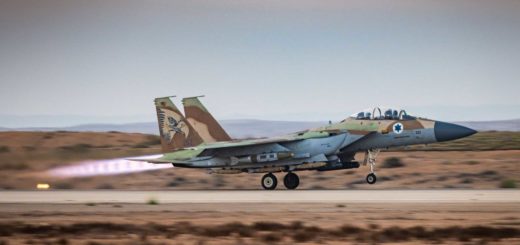US Air Force to contract Boeing to replenish GBU-57A penetrator bomb stocks after Iran strike.
{loadposition bannertop}
{loadposition sidebarpub}
Bloomberg reports the U.S. Air Force is preparing a contract with Boeing to rebuild the inventory of the 30,000-lb Massive Ordnance Penetrator (GBU-57) after its first combat use in strikes on Iran. The move, including roughly $123 million shifted into procurement, signals Washington intends to maintain non-nuclear hard-target strike options and reassure regional partners.
Bloomberg reported on September 30, 2025, that the U.S. Air Force is preparing a contract for Boeing to rebuild stocks of the Massive Ordnance Penetrator after this summer’s strike package against Iran’s deeply buried nuclear infrastructure. The move follows the first combat employment of the 30,000-pound weapon in coordinated attacks that targeted fortified underground halls and access tunnels in Iran. The MOP, designated GBU-57, is a precision earth-penetrator built to reach hard and deeply buried targets before detonation. Budget documents indicate a shift of roughly 123 million dollars into procurement to backfill inventory consumed in the operation, a clear signal that the Pentagon intends to keep hard-target strike options ready for rapid tasking.Follow Army Recognition on Google News at this link
The U.S. Air Force is contracting Boeing to replenish Massive Ordnance Penetrator stocks after their first combat use in strikes on Iran’s underground nuclear sites (Picture source: U.S. DoW).
The GBU-57 couples a forged, high-strength steel bomb body with a Boeing guidance and control tailkit that blends GPS with an inertial measurement unit for navigation resilience in jammed environments. The airframe is roughly 20 feet long and optimized for high-altitude, steep-angle delivery to maximize impact velocity and soil coupling. A programmable fuze allows delayed detonation after the casing punches through layers of soil and reinforced concrete. While exact penetration figures vary by geology and target composition, the weapon is engineered to defeat multiple meters of reinforced concrete or significant depths of overburden, transferring shock and spall into subterranean galleries where sensitive equipment resides.
Only the B-2A Spirit is currently certified to carry the MOP, using two internal weapons bays and specialized suspension hardware to manage the weapon’s mass and center of gravity. Mission planning tools calculate release envelopes that keep the bomber outside the most lethal zones of point defenses while preserving impact geometry. Integration work for the B-21 Raider is anticipated as part of the Air Force’s broader hard-target kill chain refresh, which links long-range sensing, penetrating bombers, precision guidance, and battle damage assessment into a closed loop.
Industrial execution relies on a government-owned, contractor-operated model. McAlester Army Ammunition Plant in Oklahoma forges and loads the heavy penetrator body, while Boeing provides the tailkit and system integration. Recent investments at McAlester have expanded loading and handling capacity for large-mass munitions, reducing single-point bottlenecks when inventories must be surged. The replenishment package now taking shape leverages that split production approach to compress timelines from funding to delivery.
The MOP gives commanders a non-nuclear option against deeply buried nodes that are otherwise insulated from conventional air power. During the Iran strike, planners used sequential attacks and aimpoint variation to collapse tunnels, sever utilities, and degrade centrifuge halls through overpressure and ground shock. GPS-aided guidance, coupled with robust INS, enabled precise delivery despite electronic attack and atmospheric turbulence. In practice, a pair of Spirits can service multiple aimpoints at a complex in a single night sortie, imposing significant repair costs and operational pauses on any adversary that relies on underground sanctuaries.
Rebuilding the MOP inventory after first combat use is intended to deter Tehran by demonstrating that the hard-target option remains on the shelf, not as a one-off. It reassures regional partners who depend on U.S. strike capacity against hardened threats and signals to other adversaries investing in deep-underground facilities that depth alone does not guarantee immunity. At the same time, the Air Force is exploring next-generation penetrators that trade sheer mass for smarter fuzing, improved accuracy, and navigation resilience, reflecting a long-term bet that precision and effects modeling can outpace concrete and granite. For Washington, sustaining this niche capability is now part of day-to-day competition, not an exotic contingency.

{loadposition bannertop}
{loadposition sidebarpub}
Bloomberg reports the U.S. Air Force is preparing a contract with Boeing to rebuild the inventory of the 30,000-lb Massive Ordnance Penetrator (GBU-57) after its first combat use in strikes on Iran. The move, including roughly $123 million shifted into procurement, signals Washington intends to maintain non-nuclear hard-target strike options and reassure regional partners.
Bloomberg reported on September 30, 2025, that the U.S. Air Force is preparing a contract for Boeing to rebuild stocks of the Massive Ordnance Penetrator after this summer’s strike package against Iran’s deeply buried nuclear infrastructure. The move follows the first combat employment of the 30,000-pound weapon in coordinated attacks that targeted fortified underground halls and access tunnels in Iran. The MOP, designated GBU-57, is a precision earth-penetrator built to reach hard and deeply buried targets before detonation. Budget documents indicate a shift of roughly 123 million dollars into procurement to backfill inventory consumed in the operation, a clear signal that the Pentagon intends to keep hard-target strike options ready for rapid tasking.
Follow Army Recognition on Google News at this link
The U.S. Air Force is contracting Boeing to replenish Massive Ordnance Penetrator stocks after their first combat use in strikes on Iran’s underground nuclear sites (Picture source: U.S. DoW).
The GBU-57 couples a forged, high-strength steel bomb body with a Boeing guidance and control tailkit that blends GPS with an inertial measurement unit for navigation resilience in jammed environments. The airframe is roughly 20 feet long and optimized for high-altitude, steep-angle delivery to maximize impact velocity and soil coupling. A programmable fuze allows delayed detonation after the casing punches through layers of soil and reinforced concrete. While exact penetration figures vary by geology and target composition, the weapon is engineered to defeat multiple meters of reinforced concrete or significant depths of overburden, transferring shock and spall into subterranean galleries where sensitive equipment resides.
Only the B-2A Spirit is currently certified to carry the MOP, using two internal weapons bays and specialized suspension hardware to manage the weapon’s mass and center of gravity. Mission planning tools calculate release envelopes that keep the bomber outside the most lethal zones of point defenses while preserving impact geometry. Integration work for the B-21 Raider is anticipated as part of the Air Force’s broader hard-target kill chain refresh, which links long-range sensing, penetrating bombers, precision guidance, and battle damage assessment into a closed loop.
Industrial execution relies on a government-owned, contractor-operated model. McAlester Army Ammunition Plant in Oklahoma forges and loads the heavy penetrator body, while Boeing provides the tailkit and system integration. Recent investments at McAlester have expanded loading and handling capacity for large-mass munitions, reducing single-point bottlenecks when inventories must be surged. The replenishment package now taking shape leverages that split production approach to compress timelines from funding to delivery.
The MOP gives commanders a non-nuclear option against deeply buried nodes that are otherwise insulated from conventional air power. During the Iran strike, planners used sequential attacks and aimpoint variation to collapse tunnels, sever utilities, and degrade centrifuge halls through overpressure and ground shock. GPS-aided guidance, coupled with robust INS, enabled precise delivery despite electronic attack and atmospheric turbulence. In practice, a pair of Spirits can service multiple aimpoints at a complex in a single night sortie, imposing significant repair costs and operational pauses on any adversary that relies on underground sanctuaries.
Rebuilding the MOP inventory after first combat use is intended to deter Tehran by demonstrating that the hard-target option remains on the shelf, not as a one-off. It reassures regional partners who depend on U.S. strike capacity against hardened threats and signals to other adversaries investing in deep-underground facilities that depth alone does not guarantee immunity. At the same time, the Air Force is exploring next-generation penetrators that trade sheer mass for smarter fuzing, improved accuracy, and navigation resilience, reflecting a long-term bet that precision and effects modeling can outpace concrete and granite. For Washington, sustaining this niche capability is now part of day-to-day competition, not an exotic contingency.








